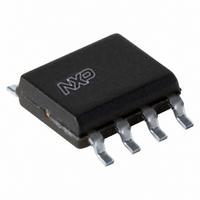TJA1021T/20/C,118 NXP Semiconductors, TJA1021T/20/C,118 Datasheet - Page 6

TJA1021T/20/C,118
Manufacturer Part Number
TJA1021T/20/C,118
Description
IC TXRX LIN 2.1/SAE J2602 8-SOIC
Manufacturer
NXP Semiconductors
Type
Transceiverr
Datasheet
1.TJA1021TK20C118.pdf
(25 pages)
Specifications of TJA1021T/20/C,118
Number Of Drivers/receivers
1/1
Protocol
LIN
Voltage - Supply
5.5 V ~ 27 V
Mounting Type
Surface Mount
Package / Case
8-SOIC (3.9mm Width)
Operating Supply Voltage (min)
5.5V
Operating Temperature Classification
Automotive
Mounting
Surface Mount
Pin Count
8
Lead Free Status / RoHS Status
Lead free / RoHS Compliant
Other names
935285394118
TJA1021T/20/C-T
TJA1021T/20/C-T
TJA1021T/20/C-T
TJA1021T/20/C-T
Available stocks
Company
Part Number
Manufacturer
Quantity
Price
Part Number:
TJA1021T/20/C,118
Manufacturer:
NXP/恩智浦
Quantity:
20 000
NXP Semiconductors
Table 4.
[1]
[2]
[3]
[4]
[5]
TJA1021
Product data sheet
Mode
Sleep mode
Standby
mode
Normal mode
Power-on mode 0
Standby mode is entered automatically upon any local or remote wake-up event during Sleep mode. Pin INH and the 30 k termination
resistor at pin LIN are switched on.
The internal wake-up source flag (set if a local wake-up did occur and fed to pin TXD) will be reset after a positive edge on pin SLP_N.
The wake-up interrupt (on pin RXD) is released after a positive edge on pin SLP_N.
Normal mode is entered after a positive edge on SLP_N. As long as TXD is LOW, the transmitter is off. In the event of a short-circuit to
ground on pin TXD, the transmitter will be disabled.
Power-on mode is entered after switching on V
[1]
Operating modes
SLP_N
0
1
0
7.2 Sleep mode
7.3 Standby mode
This mode is the most power-saving mode of the TJA1021. Despite its extreme low
current consumption, the TJA1021 can still be woken up remotely via pin LIN, or woken
up locally via pin WAKE_N, or activated directly via pin SLP_N. Filters at the inputs of the
receiver (LIN), of pin WAKE_N and of pin SLP_N prevent unwanted wake-up events due
to automotive transients or EMI. All wake-up events must be maintained for a certain time
period (t
Sleep mode is initiated by a falling edge on pin SLP_N in Normal mode. To enter Sleep
mode successfully (INH becomes floating), the sleep command (pin SLP_N = LOW) must
be maintained for at least t
In Sleep mode the internal slave termination between pins LIN and V
minimize the power dissipation in the event that pin LIN is short-circuited to ground. Only
a weak pull-up between pins LIN and V
Sleep mode can be activated independently from the actual level on pin LIN, pin TXD or
pin WAKE_N. This guarantees that the lowest power consumption is achievable even in
case of a continuous dominant level on pin LIN or a continuous LOW on pin WAKE_N.
When V
Sleep mode.
Standby mode is entered automatically whenever a local or remote wake-up occurs while
the TJA1021 is in Sleep mode. These wake-up events activate pin INH and enable the
slave termination resistor at the pin LIN. As a result of the HIGH condition on pin INH the
voltage regulator and the microcontroller can be activated.
weak pull-down
weak pull-down
TXD (output)
weak pull-down if
remote wake-up;
strong pull-down if
local wake-up
HIGH: recessive state
LOW: dominant state
BAT
wake(dom)LIN
drops below the power-on-reset threshold V
[2]
All information provided in this document is subject to legal disclaimers.
BAT
, t
wake(dom)WAKE_N
.
Rev. 7 — 25 March 2011
RXD
floating
LOW
HIGH: recessive state
LOW: dominant state
floating
gotosleep
[3]
.
and t
BAT
gotonorm
is present.
INH
floating
HIGH
HIGH
HIGH
).
off
off
Transmitter
off
Normal mode
th(POR)L
LIN 2.1/SAE J2602 transceiver
, the TJA1021 enters
Remarks
no wake-up request
detected
wake-up request
detected; in this mode
the microcontroller
can read the wake-up
source: remote or
local wake-up
[2][3][4]
[5]
BAT
TJA1021
© NXP B.V. 2011. All rights reserved.
is disabled to
6 of 25














